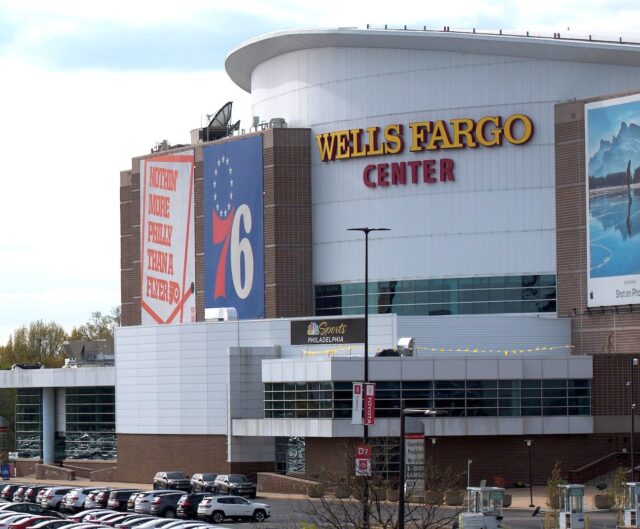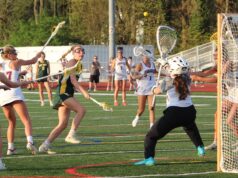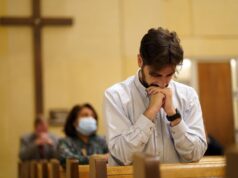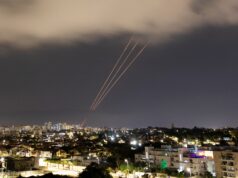
PHILADELPHIA — A professional basketball team’s plans to build a new arena have been far from a slam dunk with members of the local Chinese Catholic community, who feel their concerns have been benched.
The Philadelphia 76ers are looking to construct a $1.3 billion new arena in that city’s downtown area, adjacent to its Chinatown neighborhood. Announced in July 2022, the “76 Place” complex is currently in the approval phase, with demolition of a shopping mall on the current site slated to begin in 2026 for a building completion date in 2031.
The development corporation behind the privately funded project states on its website the arena will generate 9,000 jobs and $1.9 billion in economic output during the construction phase, with an ongoing $400 million in annual output and 1,000 jobs upon completion as well as “(the) potential to spur billions of dollars of additional activity.”
But those gains could well come at the price of Chinatown itself, said John W. Chin, executive director of the Philadelphia Chinatown Development Corporation (PCDC) and a member of nearby Holy Redeemer Chinese Catholic Church.
“The greatest concern is really the parking and the traffic,” Chin told OSV News. “And if parking and traffic is the problem that many people think they are going to be, and if they cannot be solved, that means the arena is going to be the demise of the Chinatown business corridor.”
The arena plans have sparked a number of protests from area residents and at least one online petition.
“I’m not hearing anybody in Chinatown or in the extended community saying this is a good idea,” said Capuchin Father Thomas Betz, pastor of Holy Redeemer and coordinator of the Archdiocese of Philadelphia’s Chinese Apostolate.
Both Father Betz and Chin told OSV News that community listening sessions with 76 Place project heads have not scored too many points, with developers blithely dismissing concerns about the arena’s impact.
“There’s no meaningful dialogue around the issues,” Father Betz said. “I raised the issues of parking and the business (impact), and (was told), ‘Our studies show you’re wrong. … The fans will eat in your restaurants and more than make up for any business they lose.’ It was just this rosy picture that there isn’t going to be any catastrophe.”
In an email to OSV News, a spokesperson for 76 Place said the developers “intend to present a legally binding community investment plan that will invest upwards of $50 million in specific programs, services and other supports … that address community concerns and advance key neighborhood principles.”
The spokesperson added the group’s “goal is to maintain affordability for residents,” which “could include the creation of new affordable housing units, rent and tenant support programs, and other public policy interventions.”
But Father Betz — who served from 1992 to 2016 with the PCDC as vice president and then as president — said he is not certain “Chinatown will survive the Sixers arena.”
“Businesses won’t have parking, and the traffic will be outrageous,” he said. “People won’t come to Chinatown for the restaurants and the shopping.”
Founded in the 1870s by immigrants fleeing anti-Chinese sentiment in the Western U.S., the historic Philadelphia neighborhood is “a main cultural and economic hub for much of the region’s Asian-American population,” according to VisitPhilly.com, the city’s official tourism marketing agency.
But that was far from being the case a few decades ago, said Father Betz.
Urban blight, compounded by renewal projects such as the construction of the city’s Vine Street Expressway, displaced residents and stifled Chinatown’s growth.
The blocks surrounding Holy Redeemer had turned into “empty fields” and rows of “abandoned houses,” Father Betz explained.
He and the PCDC set about “building a neighborhood around the church,” arranging for the construction of close to 70 homes, with additional units subsequently erected by a private developer.
In 2019, the PCDC also opened the Crane Community Center, a mixed-use space that houses its youth and family programming, which includes housing counseling, wellness and health services, food distribution and community recreation nights. The center also offers retail and office leases.
“Now, we’re surrounded by completely new development, mostly housing,” said Father Betz. “That’s key for saving the church. I knew we needed to have a neighborhood.”
Chin said the proposed arena now casts a long shadow over those housing opportunities.
“Our work (at the PCDC) is really focused on helping low-income families, and when we talk about preserving Chinatown, we’re talking about preserving Chinatown for low-income families,” he said. “Chinatown has always been a mixed-income neighborhood.”
Chin added the area also offers a welcoming base upon which new immigrants from China, particularly those who do not speak English well, can “give their families a solid footing on which to build their lives” in the U.S.
Chin and Father Betz plan to stay in the game with developers, advocating for the Chinatown community’s concerns, as the 76 Place project unfolds.
“The line between the church and the neighborhood should be very thin,” Father Betz said. “The church has to be with the neighborhood, not simply serving the people who go to the church. We’re not here just to serve Catholics. … The church is of the neighborhood.”
– – –
Gina Christian is a national reporter for OSV News. Follow her on Twitter at @GinaJesseReina.








